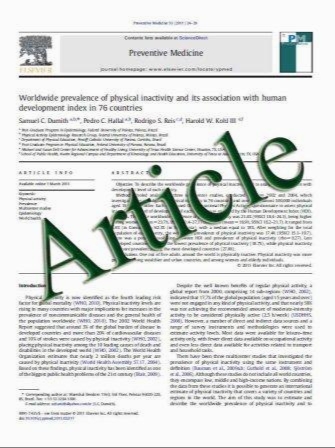First-degree relatives of persons with type 1 diabetes: insulin resistance and enterovirus infection are associated with different patterns of islet cell autoimmunity
- نوع فایل : کتاب
- زبان : انگلیسی
- مؤلف : Ileana Cubas-Duenکas Eduardo Cabrera-Rode Luis Sarmiento Gisela Molina Magile´ Fonseca Celeste Arranz Emma Dom´nguez Pedro Gonza´lez
- چاپ و سال / کشور: 2011
Description
Type 1 diabetes (T1D) results from the interaction of genetic and environmental factors. Previous studies indicate an association between detection of Enterovirus (EV) genome in blood and the clinical onset of T1D. Insulin resistance can also represent a risk factor for progression to clinically overt T1D. This study aimed at evaluating whether there is association between both EV infection and insulin resistance with islet autoantibodies in first-degree relatives of persons with type 1 diabetes. We collected sera from 94 first-degree relatives with (32) or without (64) islet cell antibodies (ICA) from the Cuban T1D prediction program. Blood glucose and insulin concentrations were determined. Antibodies to GAD65 and IA-2 were determined by radioimmunoassay. Insulin resistance was estimated by the homeostasis model assessment (HOMA-IR). EV-RNA was detected in serum using a highly sensitive reverse transcriptase-polymerase chain reaction method. The occurrence of EV-RNA was higher in ICA-positive relatives than in ICA-negative ones [15.6% (5/32) vs. 1.6% (1/62), P = 0.016]. GAD65 autoantibodies were more frequent in subjects with insulin resistance [34.5% (10/29) vs. 13.9% (9/65), P = 0.028] as defined by the HOMA-IR value. GAD65 autoantibodies also positively correlated with HOMA-IR (r.bis = 0.28, P\0.01). IA-2 autoantibodies did correlate neither with EV-RNA nor with insulin resistance. There was no association between the presence of EV-RNA and insulin resistance. Our data suggest that enterovirus infection and insulin resistance are two independent events associated with ICA and GAD65 autoantibodies, respectively. These observations support the multifactorial nature of T1D.
Received: 1 April 2011 / Accepted: 5 May 2011 Springer-Verlag 2011 Acta Diabetol DOI 10.1007/s00592-011-0297-6


